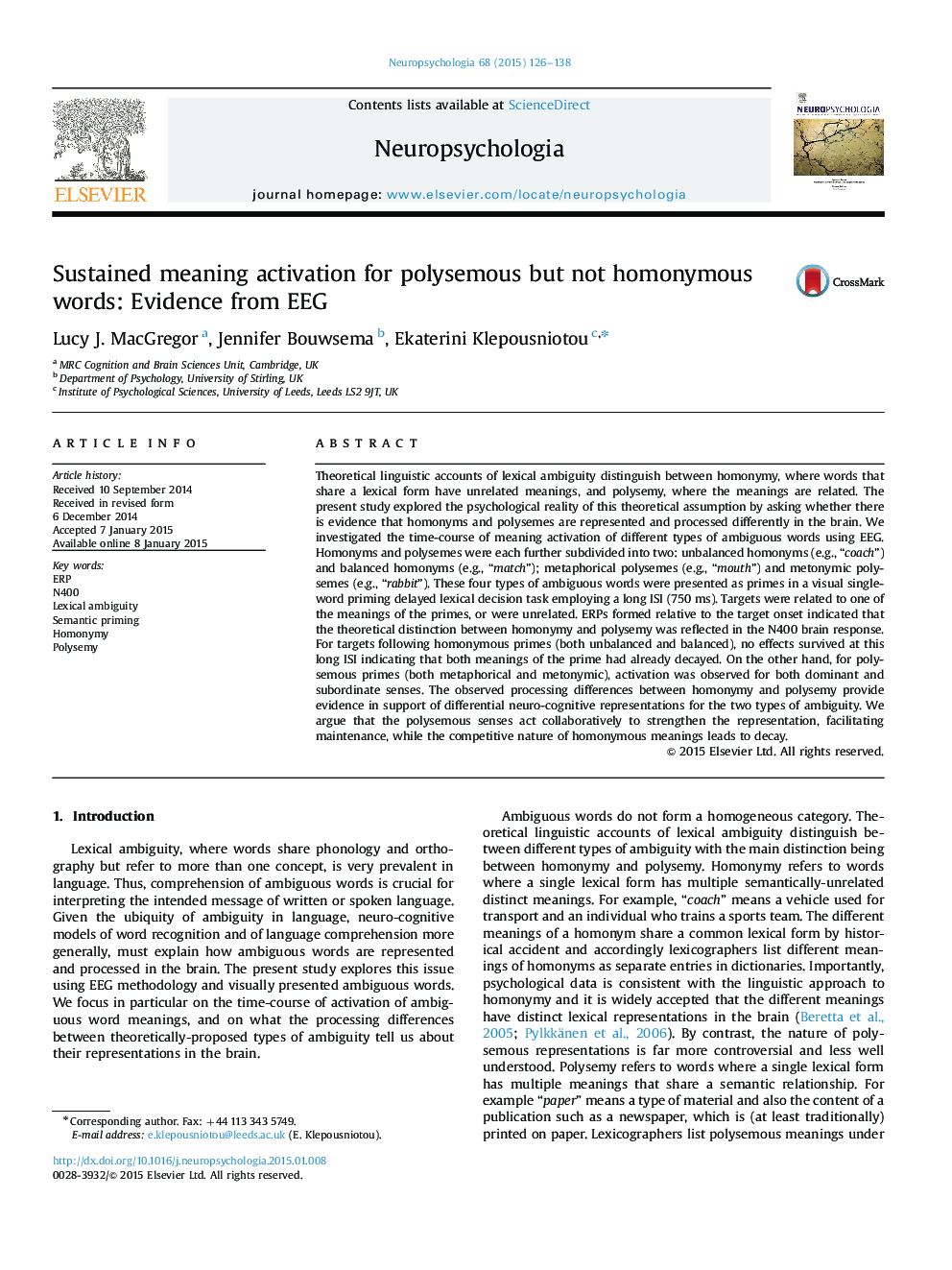| Article ID | Journal | Published Year | Pages | File Type |
|---|---|---|---|---|
| 7320448 | Neuropsychologia | 2015 | 13 Pages |
Abstract
Theoretical linguistic accounts of lexical ambiguity distinguish between homonymy, where words that share a lexical form have unrelated meanings, and polysemy, where the meanings are related. The present study explored the psychological reality of this theoretical assumption by asking whether there is evidence that homonyms and polysemes are represented and processed differently in the brain. We investigated the time-course of meaning activation of different types of ambiguous words using EEG. Homonyms and polysemes were each further subdivided into two: unbalanced homonyms (e.g., “coach”) and balanced homonyms (e.g., “match”); metaphorical polysemes (e.g., “mouth”) and metonymic polysemes (e.g., “rabbit”). These four types of ambiguous words were presented as primes in a visual single-word priming delayed lexical decision task employing a long ISI (750Â ms). Targets were related to one of the meanings of the primes, or were unrelated. ERPs formed relative to the target onset indicated that the theoretical distinction between homonymy and polysemy was reflected in the N400 brain response. For targets following homonymous primes (both unbalanced and balanced), no effects survived at this long ISI indicating that both meanings of the prime had already decayed. On the other hand, for polysemous primes (both metaphorical and metonymic), activation was observed for both dominant and subordinate senses. The observed processing differences between homonymy and polysemy provide evidence in support of differential neuro-cognitive representations for the two types of ambiguity. We argue that the polysemous senses act collaboratively to strengthen the representation, facilitating maintenance, while the competitive nature of homonymous meanings leads to decay.
Related Topics
Life Sciences
Neuroscience
Behavioral Neuroscience
Authors
Lucy J. MacGregor, Jennifer Bouwsema, Ekaterini Klepousniotou,
